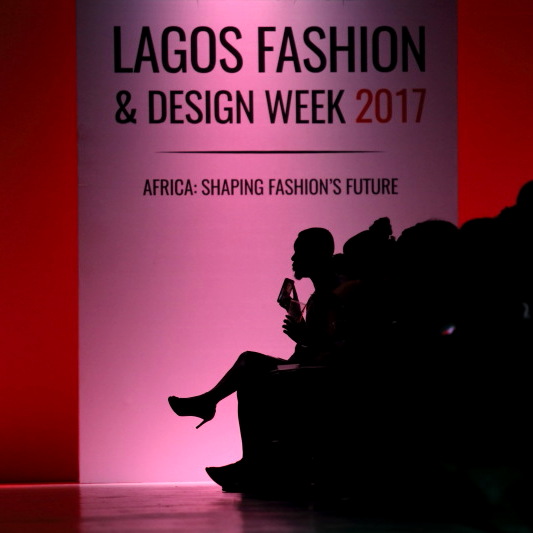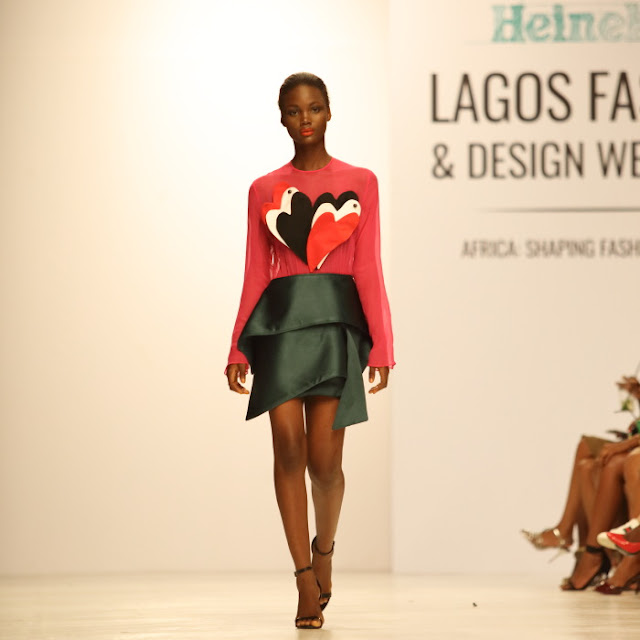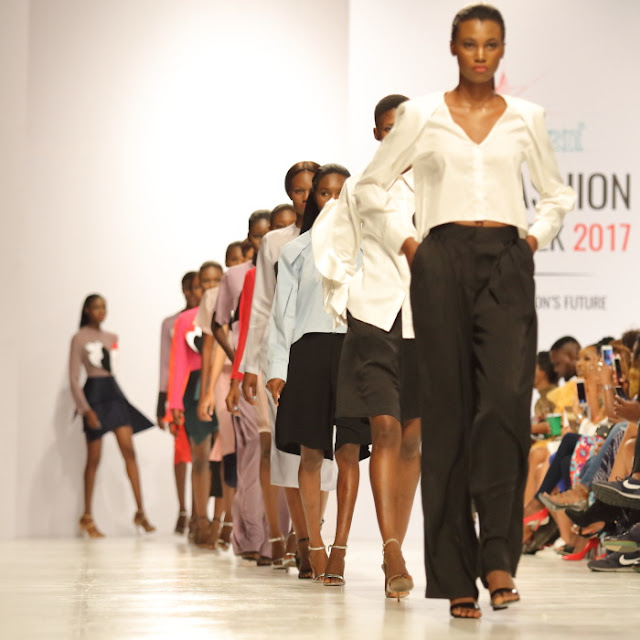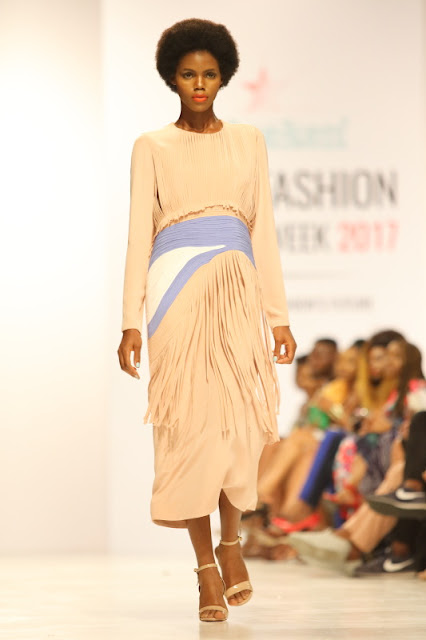 |
| of high-heels, beards and smartphones |
Saturday night, these are the last hours of the Lagos Fashion Week 2017. It takes place under a large air-conditioned marquee set-up in the middle of Eko Atlantic. The ambitious smart city is still work in progress. Just a few of the planned towers have been erected, but it is an adequate place for a large and chic gathering with an ounce of adventure in the middle of an empty space reclaimed on the sea. The city may not exist yet but a large paved boulevard is leading to the heart of the future city. It is perfect to go to a function where high-heels are de rigueur. And there is plenty of space to park.
The theme of this year's Lagos Fashion Week modestly reads "Africa: Shaping Fashion's Future".
As I come there at eight thirty in the evening, not much is happening outside the marquee, but judging by the amount of cars parked far away from the entrance, the hall must be packed. There is a relaxed atmosphere as a result of the tiredness that is visible on the staff who has worked there for four days. So no one asks questions.
The marquee is in the dark, the show is about to resume after a break. The white-painted cat-walk reflects the few lights still on, it is time to go back to one's seat. There it is, the first model emerges in the light.
Fashion is fashion, the models have elongated bodies, not much in common with the locally praised "nyash" (voluminous bottom for women) of potential customers.
 |
| from the IamIsigo collection |
Five designers are presenting their collection. Three Nigerians: Tsemaye Binitie, Bridget Awosika, Maki Oh (Amaka Osakwe) and two South Africans: Maxhosa by Laduma (Laduma Ngxokolo) and Gert Johan Coetzee, a white South African famous for his wedding gowns.
Gert Johan Coetzee was the most glamorous and extravagant with a series of black or peach-coloured translucide dresses adorned with stars and amplified by the use of veil. At the end of his show, as a personal proof of his glamour, he ran over the whole catwalk to salute like an excited puppet in pink shorts.
 |
| from the Gert Johan Coetzee collection: your eyes will be full of stars |
 |
| Gert Johan Coetzee |
Gert Johan Coetzee was not the only one to use cosmic references, Maki Oh, known for her use of traditional Nigerian fabric, had moons and stars imprinted on adire. Her lines were simple and fairly classical. She also used natural colours.
 |
| Maki Oh: of moon, stars and stripes |
 |
| Amaka Osakwe (Maki Oh) |
Maxhosa by Laduma, was showing a serie of knitwears of western shapes (shorts and cardigan for men, dresses for women) which were decorated with traditional Xhosa patterns.
 |
| the knitwear collection of Makhosa by Laduma |
 |
| Laduma Ngxokolo |
Bridget Awosika was applauded even before her show started, she presented a series of garments with simple and fluid lines occasionally adorned with hearts.
 |
| from the Bridget Awosika collection: sweet hearts |
 |
| from the Bridget Awosika collection: not only hearts |
 |
| Bridget Awosika |
Tsemaye Binitie had an assortment of comfortable shapes, never really arousing but yet elegant. Some with strips, other with flower lace and other with beads, a large part of them with pastel colors.
 |
| from the Tsemaye Binitie collection: pastel colors |
 |
| from the Tsemaye Binitie collection: simply red |
The last collection was proposed by Heineken, the main sponsor, who asked two designers, Lulu Mutuli and AzraWalji, to create a series of clothes using local prints with the colours of Heineken (green, red, white to which a touch of orange and grey was added).
 |
| Tiwa Savage and the Heineken collection by Lulu Mutuli and AzraWalji |
To close the show, Tiwa Savage sang one of the latest tunes, in a tight red skirt and red ostrich-patterned top, perched on a pair of red high heels adorned with red fur pompoms. Her platinum blond whig was arguably not the best part of her outfit. But people cheered at her apparition anyway. Denrele Ebun was one of them, always ready to shake his thin and elongated body on light-blue thigh boots covered with torn denim. Denrele had a golden net as a robe embroided with black beads, properly displaying his very own queen-of-the-night interpretation of natural Nigerian glamour.
 |
| Ehen! Denrele Ebun is having fun |















Comments
Post a Comment